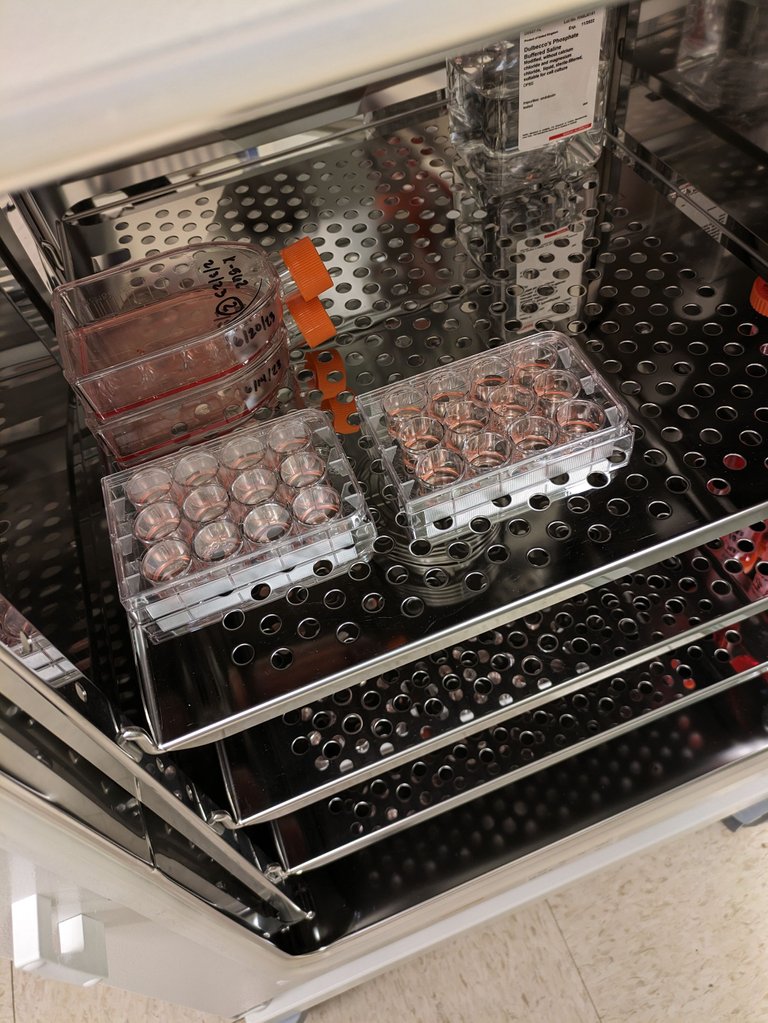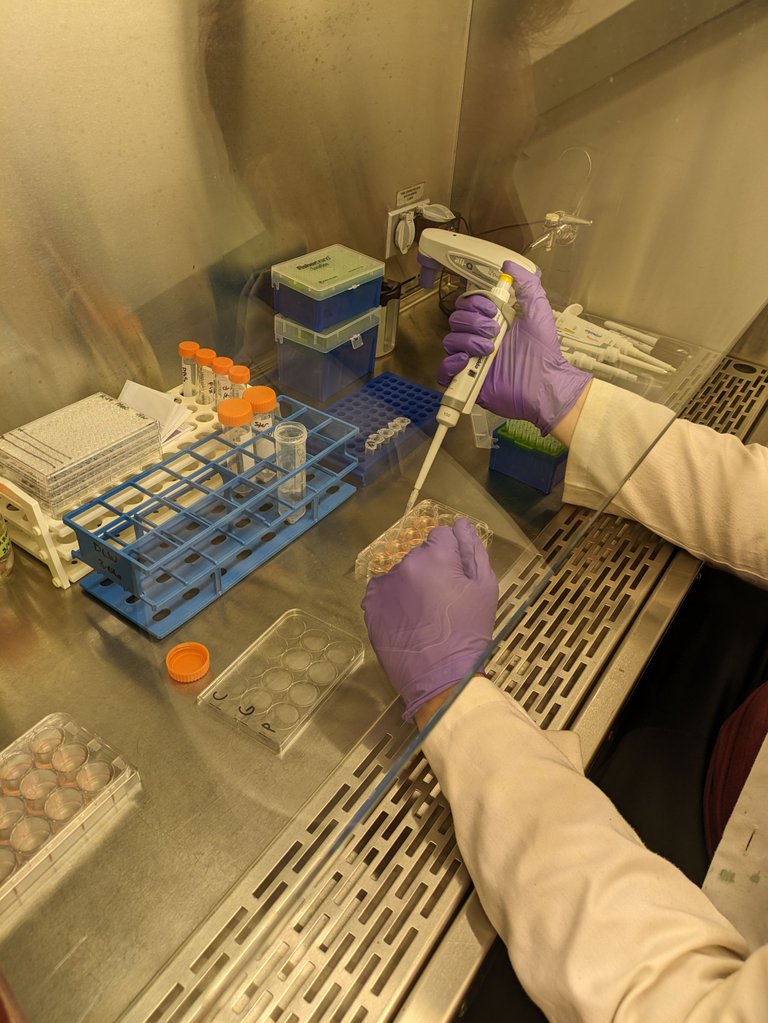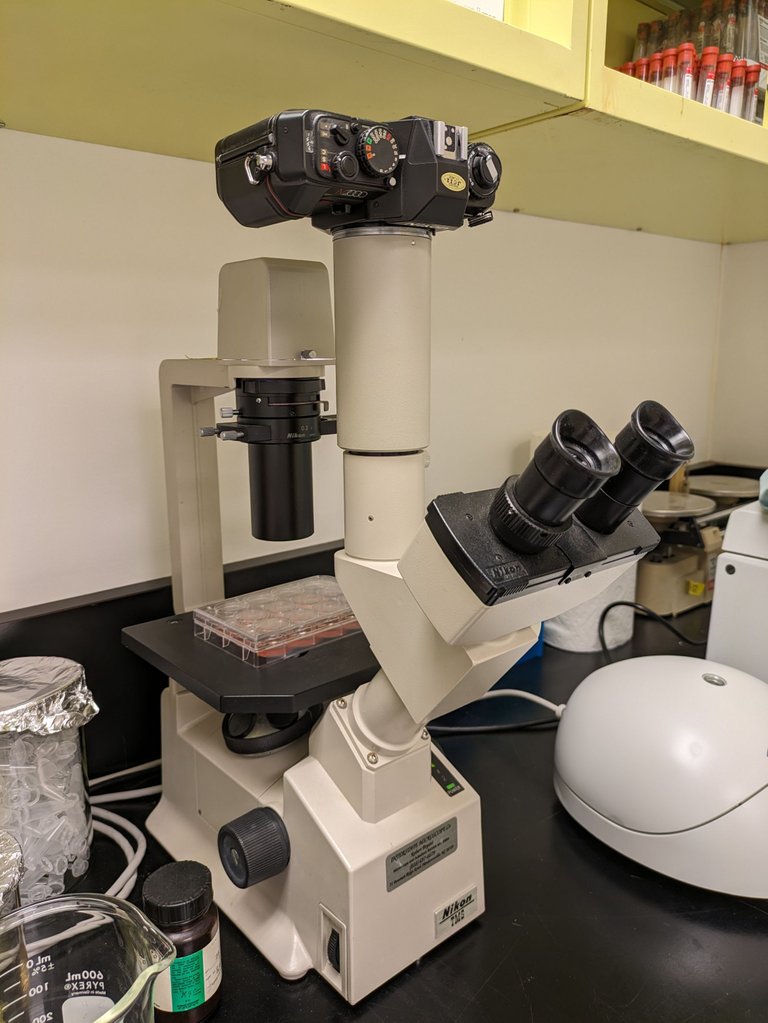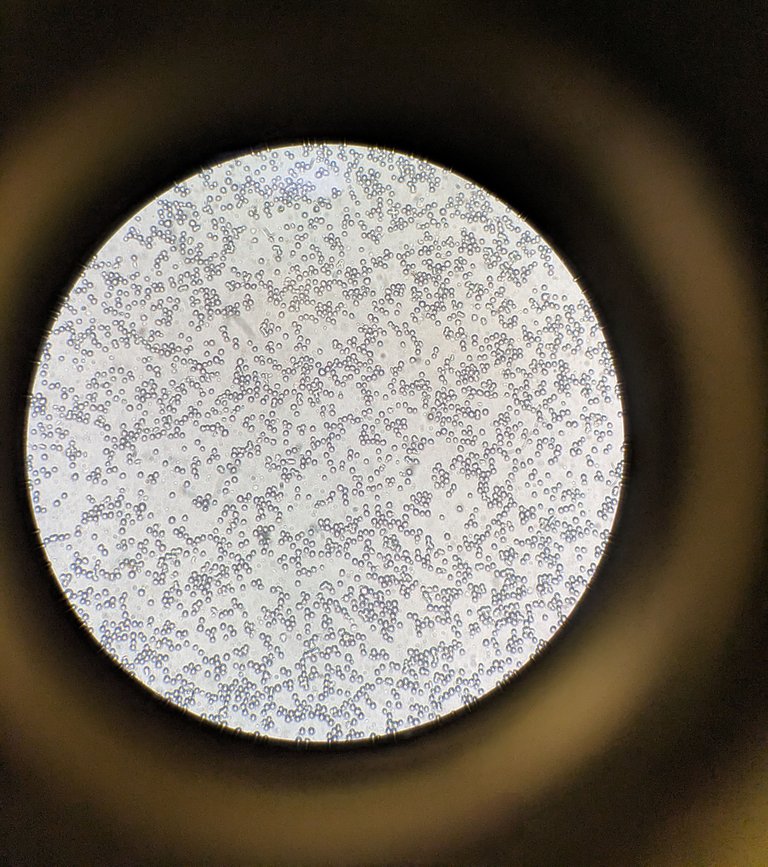Summer Project for the Medical Student
Hello, StemSocial! Today I am sharing the medical student's summer project with you. He has practiced pipetting and observed as I work in the sterile flow hood for the last week. This morning, I let the student do all the tasks to get the leukemia cells ready for experimentation. The cells we are working with are K-562s, which are an immortalized chronic myeloid leukemia cell line.
I have been working with K-562s for a while now to overexpress a certain protein of interest, a fungal pattern recognition receptor present on the surface of immune cells. This receptor is responsible for promoting an immune response to fungal infection. We study Candida albicans and sepsis in this lab. We are curious if the leukemia cells, which are neutrophil-like in nature, will have an increased expression of this protein in response to different ligands.
First, the student had to count the cells growing in flasks in the incubator after the long weekend. The University was closed for Juneteenth this year, YAY! Next, he needed to dilute the cells to 1 X 10^6 cells/mL (one million cells per milliliter). We need a total of 24 million cells for this experiment. We ended up having over 30 million cells to work with. These cells grow so fast! We started with about 2 million last Friday. The student aliquoted 1 million cells to each well of two 12-well plates.
We allowed the cells to rest until about 4 pm this afternoon when he added the ligands. The cells will incubate with the ligands for about 18 hours. Tomorrow we will harvest the cells and stain them with fluorescent antibodies for different receptors and fix them with paraformaldehyde. On Friday we will analyze the cells by Flow Cytometry.
All pictures were taken with my Google Pixel 7 cellphone

Immune System Ligands
This experiment is being done in quadruplicate and the student will repeat it every week for the next four weeks. One row has PBS (phosphate-buffered saline) added as the control wells. The next 5 rows contain the different ligands: Glucan, Pam3CSK4, LPS, TDB, and Pam3CSK4 + LPS. Each ligand has a certain immune response.
The medical student is hard at work 😄

Glucan
Glucan is a Dectin‑1 receptor ligand that promotes macrophage stimulation. In Immunology, ligands are substances that bind or interact with receptors of immune cells. Glucan has been found in the cell walls of bacteria, fungi, and yeast as well as in oats. Since we study Candida albicans, it is important for us to study this cell wall component. We currently study all three dectin receptors in this lab, with Dectin-3 being the main protein of interest.
"Good for the heart, beta-glucan (β-glucans) foods and supplements help everything from brain function to cancer prevention." - WebMD
Check out this article to learn about the health benefits of plant-derived beta-glucan.
Pam3CSK4
Pam3CSK4 is a synthetic lipopeptide (LP). This particular ligand promotes the TLR2/TLR1 pathway by mimicking bacterial LPs which are important in the study of sepsis and septic shock.
"Bacterial LPs are a family of pro-inflammatory cell wall components found in both Gram-positive and Gram-negative bacteria" - InvivoGen
LPS
Lipopolysaccharides (LPS) are complexes found in the outer membrane of Gram-negative bacteria. These complexes promote a TLR4 immune response. We know that LPS plays a role in sepsis and septic shock.
"Traditionally, LPS are best known for their eliciting strong immune responses in a variety of eukaryotic species ranging from insects to animals and humans." - Frontiers in Pharmacology
TDB
This synthetic ligand mimics the immune response to tuberculosis which is caused by a bacteria. Individuals with tuberculosis are more susceptible to sepsis.
"Trehalose-6,6-dibehenate (TDB) is a synthetic analog of trehalose-6,6-dimycolate, which is the most studied immunostimulatory component of Mycobacterium tuberculosis." - InvivoGen
What are TLRs?
Toll-like receptors (TLRs) are mediators of inflammation in the body. They play a major role in mediating responses to pathogens. These receptors also link adaptive immunity and innate immunity.
"Toll-like receptors (TLRs) have been identified as the important mediators of inflammatory pathways in the gut which serve as crucial regulators in maintaining the balance between commensal bacteria in the gut and the mucosal immune system." - Biomedical Research International
K-562 Cells
I thought you would like to meet these infamous leukemia cells. I used an inverted microscope to check them out today. The microscope is equipped with an old manual film camera. I just used my handy cellphone to grab the image of the cells below.
"K-562 are lymphoblast cells isolated from the bone marrow of a 53-year-old chronic myelogenous leukemia patient. The K-562 cell line is widely used in immune system disorder and immunology research." - ATCC
Nikon TMS Inverted Microscope w/ Nikon N2000 (1985) film camera

A peak at K-562 cells. Picture captured through the microscope eyepiece with my cellphone.

Thanks for stopping by my blog and learning more about working in a biomedical research lab.

References:
